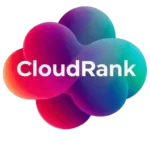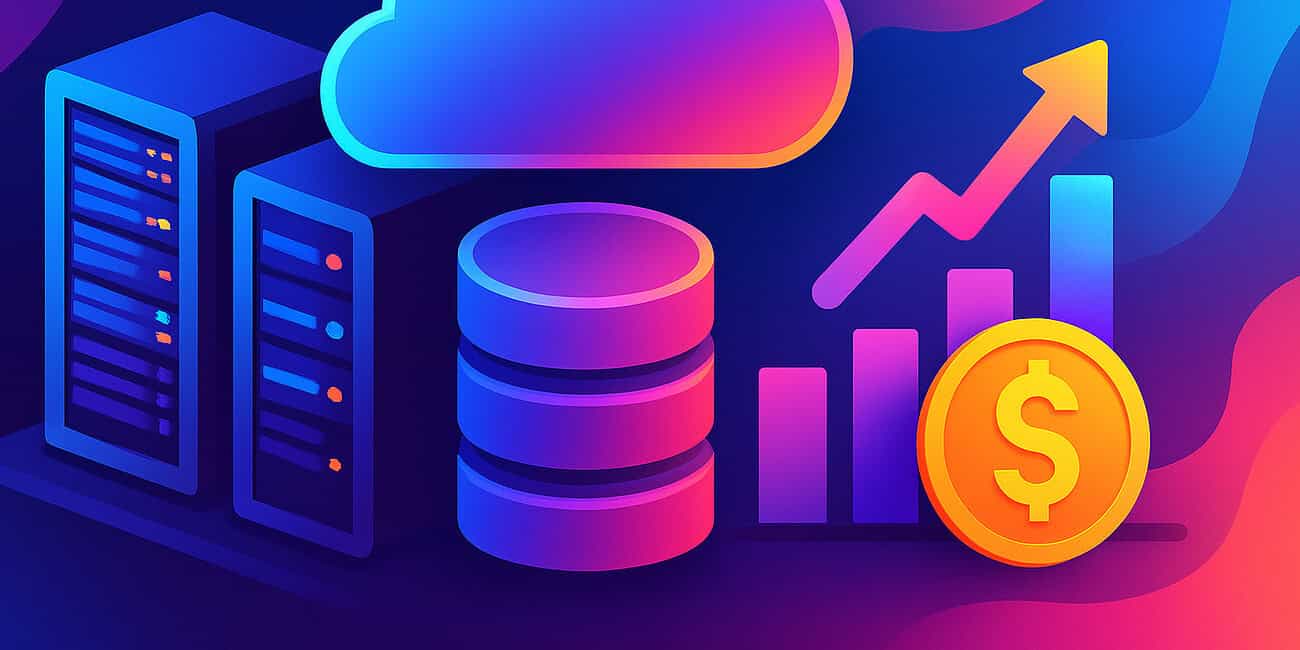Last Updated on 20/04/2025 by CloudRank
Before we delve into the advantages, it is crucial to comprehend the fundamental difference between CapEx and OpEx. Capital expenditures are significant purchases a company makes that are designed to be used over the long term. These include physical assets like servers and data centres. On the other hand, operational expenditures are the day-to-day expenses necessary to keep a business running, such as utilities and lease payments, which, in the case of cloud computing, translates to subscription-based services.
What Constitutes CapEx?
Capital expenditures typically involve large, upfront investments that are essential for the infrastructure of a company. These investments are not just limited to hardware but can extend to software licenses, upgrades, and even training personnel to manage these systems. The financial commitment associated with CapEx is often substantial, requiring careful budgeting and financial forecasting.
This model can strain a company’s resources, especially if the technology becomes outdated or requires frequent upgrades.
The Lifecycle and Depreciation of CapEx
Assets purchased under the CapEx model undergo a life cycle, which involves acquisition, utilisation, and eventual disposal or upgrading. Depreciation is a key factor to consider, as it reduces the value of an asset over time, impacting financial statements. Companies need to account for depreciation in their financial planning, which can affect profitability and tax obligations. The risk of technology obsoleteness further complicates this, as rapid technological advancements can render purchased assets outdated quickly.
OpEx in the Context of Cloud Computing
Operational expenditures in cloud computing cover ongoing, subscription-based services that provide flexibility and cost-effectiveness. Unlike CapEx, OpEx does not require a hefty initial investment, allowing businesses to allocate resources more strategically.
This model facilitates a transition from ownership to service usage, where companies pay for what they consume. The scalability of cloud services under OpEx enables businesses to respond quickly to changing market demands without the burden of long-term financial commitments.
The Burden of CapEx
Traditional IT infrastructure relies heavily on CapEx. Companies invest substantial amounts in hardware, software licences, and the facilities to house them. This upfront investment can be a significant financial burden, requiring long-term commitment and planning. Moreover, technology evolves rapidly, and the risk of obsolescence can render these investments inefficient over time.
Upfront Financial Commitment
The upfront financial commitment required by CapEx can be daunting for businesses, particularly those with limited capital.
The need to purchase and maintain physical infrastructure can tie up substantial financial resources that might otherwise be used for innovation and growth. This financial strain is worsened by the requirement to keep up with technological advancements, which often results in added investments in upgrades and replacements.
Long-Term Financial Planning
Long-term financial planning is a crucial aspect of managing CapEx. Firms must forecast their needs and allocate funds accordingly, which can be challenging in a swiftly changing technological landscape. This planning involves not just the initial purchase but also ongoing maintenance and eventual upgrades or replacements. The uncertainty of technological advancements adds complexity to this process, making accurate forecasting challenging.
Obsolescence and Technological Advancements
The fast-paced nature of technological advancements poses a considerable risk of obsolescence for CapEx investments.
As new technologies emerge, older systems may become inefficient or incompatible, necessitating further investments. This cycle of obsolescence can lead to increased costs and reduced competitiveness. Companies must weigh up the potential benefits of new technologies against the costs of upgrading existing infrastructure.
The Flexibility of OpEx
With OpEx, businesses only pay for what they use. Cloud computing transforms IT expenses into predictable, scalable costs. Instead of investing in pricey hardware, companies can lease computing power and storage from cloud service providers. This model allows for flexibility and scalability, enabling businesses to quickly adapt to changing needs without incurring sizeable upfront costs.
Pay-As-You-Go Model
The pay-as-you-go model inherent in cloud computing offers significant financial flexibility.
Businesses can align their expenditure with actual usage, avoiding the inefficiencies associated with over-provisioning. This model enables companies to scale resources up or down based on demand, ensuring cost-effectiveness and optimal performance. The ability to adjust expenses dynamically provides businesses with a competitive edge in managing their financial resources.
Scalability and Resource Optimisation
Scalability is a hallmark of the OpEx model, allowing businesses to expand or contract their IT resources as necessary. This flexibility is crucial in responding to market fluctuations and customer demands. Companies can optimise their resources, paying only for what they use and reallocating savings to other strategic areas. This optimisation not only reduces costs but also enhances operational efficiency and agility.
Reduced Financial Risk
By shifting to an OpEx model, businesses significantly reduce their financial risk.
The elimination of large, upfront investments enables companies to maintain a healthier cash flow and allocate resources more effectively. This diminished financial risk is particularly beneficial for startups and small enterprises, endowing them with the agility and financial stability needed to compete in dynamic markets. The capacity to swiftly adapt to shifting conditions without incurring significant financial burdens is a key benefit of the OpEx model.
Financial Advantages of Cloud Computing
The shift from CapEx to OpEx in cloud computing offers numerous financial advantages:
Cost Efficiency and Predictability
One of the most compelling financial benefits is the cost efficiency achieved through the cloud’s pay-as-you-go model. Enterprises can dodge the large upfront costs associated with purchasing and maintaining physical infrastructure. Instead, they can allocate funds more strategically, focusing on growth and innovation.
Furthermore, cloud computing costs are predictable. Organisations can budget with greater accuracy, aligning expenses with actual usage. This predictability assists in financial planning and can lead to more informed decision-making.
Enhanced Cash Flow Management
The OpEx model enhances cash flow management by spreading costs over time. This allows businesses to retain more capital, which can be redirected towards core business activities and strategic initiatives. By reducing the need for large capital investments, companies can maintain a healthier cash flow, which is particularly beneficial for startups and small enterprises with limited resources.
Rapid Deployment and Time-to-Market
Cloud computing facilitates rapid deployment of applications and services. Companies can launch new products and services faster, gaining a competitive edge in the market.
This agility not only speeds up time-to-market but also reduces the opportunity cost associated with delayed launches.
Scalability and Elasticity
Cloud computing offers unrivalled scalability and elasticity. Businesses can effortlessly scale resources up or down based on demand, ensuring optimal performance without over-provisioning. This flexibility leads to cost savings, as organisations only pay for the resources they actually utilise.
Strategic Financial Planning
Cloud computing enables strategic financial planning by providing detailed insights into IT expenditures. Companies can analyse usage patterns and adjust their spending accordingly. This transparency allows for more accurate forecasting and budgeting, leading to better financial outcomes. The ability to align IT spending with business objectives enhances overall financial strategy and supports long-term growth.
Real-World Example: Cloud Cost Savings in Action
Consider a real-world example of a medium-sized enterprise transitioning to cloud computing. Previously, this company operated a traditional data centre, with significant CapEx investments in servers, storage and cooling systems. The shift to the cloud allowed them to decommission physical assets and reduce energy consumption, resulting in a 30% reduction in overall IT costs.
Operational Efficiency Gains
Furthermore, the company experienced improved operational efficiency, with IT staff focusing on strategic projects rather than routine maintenance. By alleviating the burden of maintaining physical infrastructure, the company was able to redirect its resources towards innovation and strategic initiatives. This shift not only improved operational efficiency but also enhanced employee satisfaction and productivity.
Reduction in Environmental Impact
The transition to cloud computing also contributed to a reduction in the company’s environmental footprint. By decommissioning physical assets and reducing energy usage, the company was able to lower its carbon emissions. This reduction in environmental impact aligns with corporate social responsibility goals and can boost the company’s reputation and brand image.
Business Agility and Competitive Edge
The ability to scale resources according to business requirements further optimised costs, contributing to substantial cloud cost savings. This flexibility allowed the company to quickly respond to market changes and customer demands, gaining a competitive edge. The agility provided by cloud computing positioned the company to innovate and expand in a rapidly evolving business environment.
Addressing the Challenges
While the financial advantages of transitioning from CapEx to OpEx are compelling, it’s important to tackle potential challenges:
Cost Management
Effective cost management is vital to realising the full financial benefits of cloud computing. Organisations must implement robust monitoring and optimisation strategies to avoid unexpected expenses. Tools such as cost management dashboards and automated scaling can help maintain control over cloud computing costs.
Data Security and Compliance
Transitioning to the cloud requires careful consideration of data security and compliance requirements. Organisations must ensure that cloud service providers adhere to industry standards and regulations to protect sensitive information. Implementing strong governance and security measures is essential to mitigate risks and maintain trust.
Change Management and Cultural Shift
The transition from CapEx to OpEx involves not just financial and technological changes but also a cultural shift within the organisation. Employees need to adapt to new ways of working and thinking about IT resources. Effective change management strategies, including training and communication, are vital to ensure a smooth transition and maximise the benefits of cloud computing.
Vendor Management and Dependency
Relying on cloud service providers introduces a dependency that requires careful vendor management. Companies must evaluate potential providers based on their reliability, service level agreements, and support capabilities. Developing strong vendor relationships and regularly assessing performance ensures that the organisation can rely on its cloud partners to meet its needs.
Conclusion
The transition from CapEx to OpEx through cloud computing offers transformative financial advantages.
By embracing the cloud’s pay-as-you-go model, organisations can achieve cost efficiency, improve cash flow management, and enhance business agility. While challenges exist, the strategic implementation of cloud computing can lead to substantial cloud cost savings, positioning companies for success in an increasingly competitive landscape.
As businesses continue to navigate the complexities of the digital era, understanding and leveraging the financial advantages of cloud computing will be key to sustaining growth and achieving long-term success. Adopting cloud-based solutions not only drives innovation but also aligns with broader business objectives, ensuring that companies remain competitive and resilient in the face of technological and market changes.










